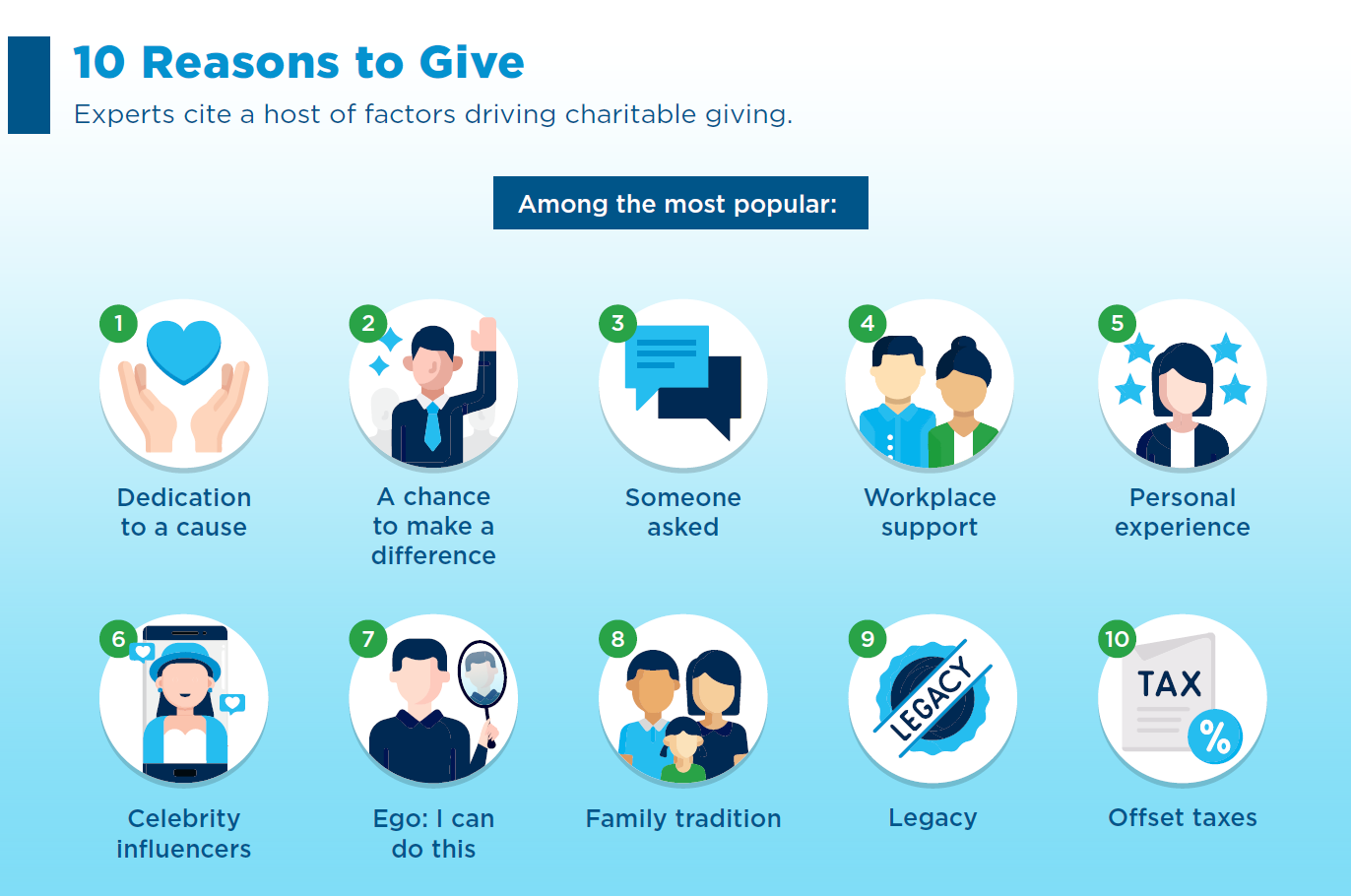Some ways to have rewarding conversations about charitable giving
From business succession to strengthening communities, there’s much more to charitable giving than tax offsets. In fact, some believe that the very fabric of society depends on philanthropy. For financial professionals and their clients, the rewards run deep. So why do so many people avoid talking about this unique financial planning vehicle? Many either have the wrong idea or don’t know where to start. Clarity on the opportunities and way forward begins with open conversation.
Perception and attitude seem to be flawed on both sides.
“Individuals often don’t know who to talk to in the first place,” Peck continues. “It may not even occur to them to ask their financial professional. The latter in turn are not initiating the discussion themselves. Why? A common reason may include inexperience. Feeling inadequate, financial professionals seem to shy from the topic.”
Seasoned practitioners, meanwhile, often assume a client’s disinterest in philanthropy based on their current and future financial profile, motivation, and other factors.
“It’s a mistake to rule out motivation or intent,” notes Peck. “But you also have clients who don’t want to talk philanthropy based largely on misconception.”
Not a zero-sum game
Underinformed professionals often perceive a lack of “game” in philanthropy.
“We have seen wealth managers view giving money away as conflicting with their goal of getting assets under management,” says Jonathan Gassman, principal in the Florida office of Prager Metis, a leading global accounting and advisory firm and Peck’s partner on Personal Financial Planning podcasts for the American Institute of Certified Public Accountants (AICPA). “They think it’s a zero-sum game. They lose, the charity wins. Yet making charitable planning part of your practice can be most lucrative for both making money and expanding and strengthening client relationships.”
Findings from Fidelity Charitable, a 501(c)(3) public charity that was the nation’s top grantmaker in 2021 with $10.3 billion in distributions, dramatically affirm the rewards. Cited in a 2021 report1 on accelerating firm growth with charitable planning, Fidelity’s analysis of 1,200 registered investment advisors and family offices offering charitable planning had six times the assets, three times the organic growth, and 1.3 times the new money of firms that did not offer charitable services. Plus, a larger share of wallet, higher proportion of clients with $1 million-plus in managed assets, and higher net promoter score, with clients likelier to stay loyal and recommend their advisor.
Charitable giving is growing, but it could grow faster
The foregoing disconnects aside, charitable giving is not hurting. Statistics from the National Philanthropic Trust2 show that Americans gave nearly $485 billion in 2021, up 4% from the record-breaking $471 billion in 2020. Most (nearly $327 billion, or 67%) came from individuals. Corporate and foundation giving were both up, with double-digit growth in sectors including arts, culture and humanities, public-society benefit, and the environment and animals.
Ironically perhaps, this wake-up call is not complicated to answer. Borrowing from core journalistic principles, it’s fundamentally about the questions of why, when, and how to give, and to whom or to what.
“The pathway to making an informed decision starts with an open-ended exploration of a person’s interest and motivation in giving,” Peck says. “There are at least 15 reasons why people give to nonprofit organizations, from dedication to a cause to leaving a legacy. And yes, offsetting or reducing income, estate, or other taxes.”
Maximizing the impact
After nailing down the reason “why,” it’s time for the technical talk around assets and giving vehicles.
“An old adage goes that if you are willing to plan a gift, the government is willing to forgive the tax,” says Gassman. “That’s one wonderful aspect about giving that tends to foster disbelievers. To many people, it sounds too good to be true. But it’s a true golden path, with multiple flexible ways to go. Giving cash and writing checks is popular and welcome. There are ways to maximize your philanthropic impact, though, such as donating assets with a low-cost basis that have since appreciated.”
Classic examples include closely held securities, publicly traded stocks, and real property.
“Say your original stock purchase of $300,000 is now worth $450,000,” explains Gassman. “Selling that incurs, on a federal level depending on how long the investment has been held, a 20% capital gains tax plus 3.8% Medicare tax that goes to the government. Donate the stock, though, and the $450,000 goes to the charity, while you generally get the deduction for the full fair market value.”3
"Statistics from the National Philanthropic Trust2 show that Americans gave nearly $485 billion in 2021, up 4% from the record-breaking $471 billion in 2020."
That’s a real difference with real impact, and as Peck and Gassman both emphasize, it is important to start charitable planning as early in the year as possible to maximize outcomes.
“Talking motivation is one thing but the funder-grantee equation is far more involved,” Gassman says. “There’s the bookkeeping side, including documentation, receipts, forms, and appraisals. Then there is the array of sophisticated giving vehicles to consider. We could talk all day about DAFs [Donor Advised Funds], qualified charitable distributions, family foundations, charitable trusts, charitable gift annuities, donating overseas, and much more. Bottom line, there are strategies for everyone, with tangible and intangible rewards for all.”
True colors
Unique scenarios for business owners include literally giving the company away. “Patagonia founder’s Yvon Chouinard decision to place his outdoor apparel enterprise with a trust and a nonprofit organization, with all future profits to be donated to help address climate change, gained major attention,” Peck says. “From the business succession and continuity, corporate image, and goodwill perspectives, it was a master stroke of showing his true colors and being honest about doing good for the world.”
Another area gaining major traction is trust-based philanthropy. “This is about funders and donors doing the most good by listening to and coordinating with thought leaders and partners at the community level,” Peck says. “Uniting the people on the ground who best know what needs fixing with those with the financial resources to help is a powerful equation.”
Reinforcing that point, Gassman notes that “Communities and society at large would be far less robust without the fabric and cohesiveness of the schools, museums, parks, healthcare, and other structures created by nonprofit entities. Problems get solved when the right people have the right conversations at the right time. When you pay the government, you don’t choose where your money goes. Giving to the charitable organizations and nonprofits that are close to the issues and best positioned to effect change is the most effective way to help.”
Share
Related resources
More on Expert Insights
Your Thriving
Practice
A destination to empower financial professionals to build, manage, and grow their practice
Get started with Global Atlantic
Take the next step with a company that can help elevate your business.
Need help?
Find all the contact information to submit and service your business.











